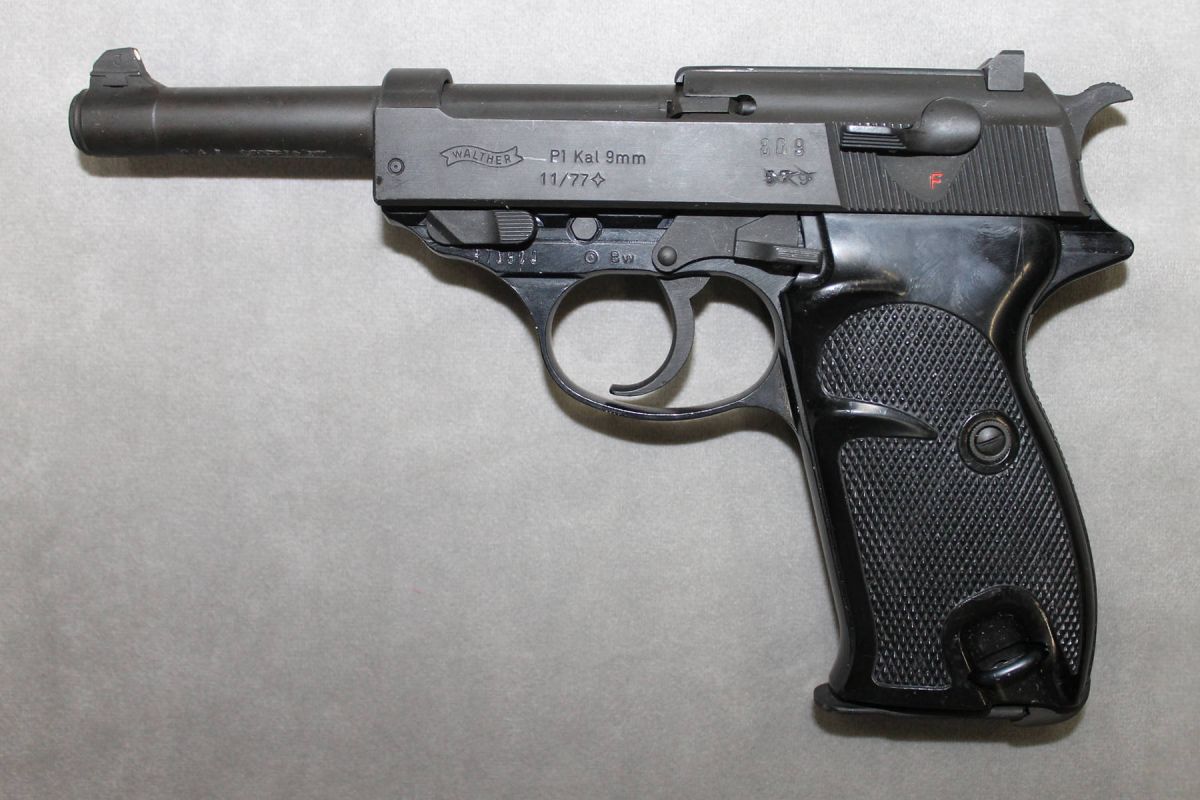If you’ve seen your fair share of World War II movies or Cold War spy series, chances are you’ve seen the Walther P38 9mm pistol.
Thanks to its many on-screen appearances as well as its real-world usage by the Wehrmacht during WWII, it’s easily a close second to James Bond’s iconic Walther PPK as the most famous firearms ever produced by Carl Walther GmbH Sportwaffen.
WWII: Walther P38 History and Specifications
As noted in my article on the “5 Best Walther Guns On Planet Earth,” the P38 was the first pistol to combine the DA/SA trigger with a locked breech. (By contrast, the Walther PP and PPK employ direct blowback.) It was also one of the first pistols to display a chamber-loaded indicator. The pistol also employed two features that would later be emulated by my beloved Beretta 92F/M9, namely an open-top slide that helps prevent stovepipe jams and a falling locking block to keep the slide and barrel locked together until enough pressure has abated to allow the slide to reciprocate safely.
As I also noted in that article, the first three prototypes of the Heeres Pistole — that’s the official proper name of the gun according to the Nicholas Nitpickers of the gun writers’ world —- were submitted to the Nazi German government in 1939, and mass production started in mid-1940. In addition to Walther, Mauser and Spreewerk got involved in producing these pistols.
Nazi Germany lost the war, but the pistol nonetheless established a reputation for battlefield reliability, even if it didn’t have the stopping power reputation of America’s M1911 .45 ACP. The P38 weighed 34 ounces. It had a barrel length of 4.9 inches and an overall length of 8.5 inches. Standard magazine capacity was 8+1 rounds.
The Cold War: Walther P1 History and Specifications
The P38 found a new lease on life with the post-WWII Bundeswehr as the P1 beginning in 1957. The only difference between the two weapons was that the P1 has a black-finished aluminum alloy frame, as opposed to the all-steel frame of the P38, thus saving seven ounces in weight.
As Mark Miller noted in Guns America Digest, “For all intents and purposes, both guns feel and shoot the same. In 1975, the aluminum frame was reinforced with a hex bolt above the trigger guard, and a thicker, stronger slide was added.”
The P1 doggedly remained in service with the Bundeswehr until 2004 when it was finally replaced by the Heckler & Koch USP (P8). Actual production of the P1 ceased in 2000. Between the P38, the P1, and a few other variants, more than 1 million of these guns were produced over a 61-year span.
Personal Shooting Impressions
I bought my own surplus P1, complete with Bundeswehr button flap holster, in 2004 from Ron & Jo’s Firearms & Sporting Supplies, Inc. in O’Fallon, Illinois. I paid a very reasonable $329 for the piece, which would be the equivalent of $531.46 today.
For such an obsolescent gun, it’s been a surprisingly good performer, with easy head shots at 7 yards and center-of-torso shots at 15 and 25 yards. Many complain that the P38/P1’s double-action trigger is heavy and grating, but my specimen has avoided that malady.
The pistol even helped me qualify for Stock Service Pistol Marksman status during an IDPA classifier, even though neither the pistol herself nor that damn widowmaker button-flap holster was an ideal choice for that sort of competition.
What’s more, it never ceases to amaze me how many of my shooting buddies, from all levels of shooting experience, take a liking to the P1. Not bad at all for such a supposedly outdated firearm!
Want Your Own Walther?
The Guncritic.com website lists surplus P1s selling for as little as $383.56. If, on the other hand, you want a WWII vintage P38, bring a bankbook, as that same website shows a price range that starts at $1,092.49. Meanwhile, the Legacy Collectibles website lists a couple of them at a slightly less pricey $950. and $995, but from there, the prices shoot up into the 4-figure range, so act fast if you want to save a few bucks.

